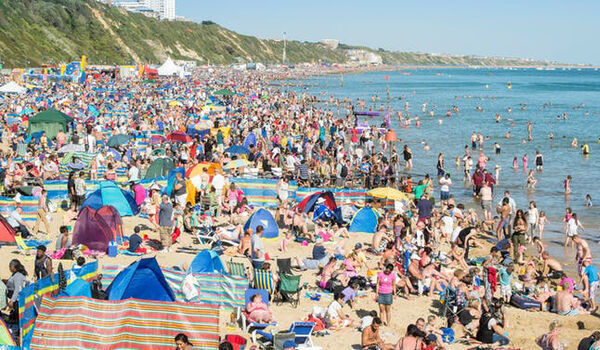A hot topic: heat hazards in the media
- Centre for Decision Research

This article was originally posted on the Priestley International Centre for Climate blog.
May was the sunniest month ever recorded in the UK, and these last few days of June will see the summer heat return.
While these balmy temperatures might help many of us to survive lockdown, there are significant hazards associated with these increasingly common periods of hot weather. More often than not, these dangers are overlooked by the media.
The 10 hottest years on record have all occurred since 2002 and an unusually mild winter and extra sunny spring means 2020 is shaping up to be another record breaker. But hot weather also brings very real risks to people’s health and wellbeing, particularly for more at risk groups such as the elderly.
Though there are things people can do to reduce the harm they experience, such as drinking plenty of water and staying out of the midday sun, people need to recognise the risky side of enjoying the hotter weather and be well informed about the actions they can take. UK newspapers are still a main source of climate change information for many people, including information about climate change impacts and adaptation.
Along with my co-authors, the Priestley Centre’s Suraje Dessai and Andrea Taylor and former Deputy Director Wändi Bruine de Bruin, I undertook the first analysis of UK newspaper coverage of climate change adaptation. We found that the risks of hot weather were covered far less and much more sporadically than was UK flooding, which was an ongoing news story throughout the period studied.
Whilst flooding is often a stand-alone topic, articles rarely talked only about hot weather, instead including it in a list of climate change impacts. While flood defences and home flood insurance in particular were well debated ideas, newspapers didn’t present any clearly defined hot weather adaptation strategies.
Though newspapers did urge readers to become more informed about their own exposure to hot weather, and other climate related events, they provided little information as to what individuals could do. This aligns with a more general trend of limited official hot weather communications.
With the hotter weather returning this week and lots of people looking forward to getting back outside, it will be interesting to see if the newspapers start including advice on how people can enjoy the sunshine safely.
The full paper was published in June 2020 in Environmental Communications and can be found here: https://doi.org/10.1080/17524032.2020.1767672
Contact us
If you would like to get in touch regarding any of these blog entries, or are interested in contributing to the blog, please contact:
Email: research.lubs@leeds.ac.ukPhone: +44 (0)113 343 8754
Click here to view our privacy statement
The views expressed in this article are those of the author and may not reflect the views of Leeds University Business School or the University of Leeds.

